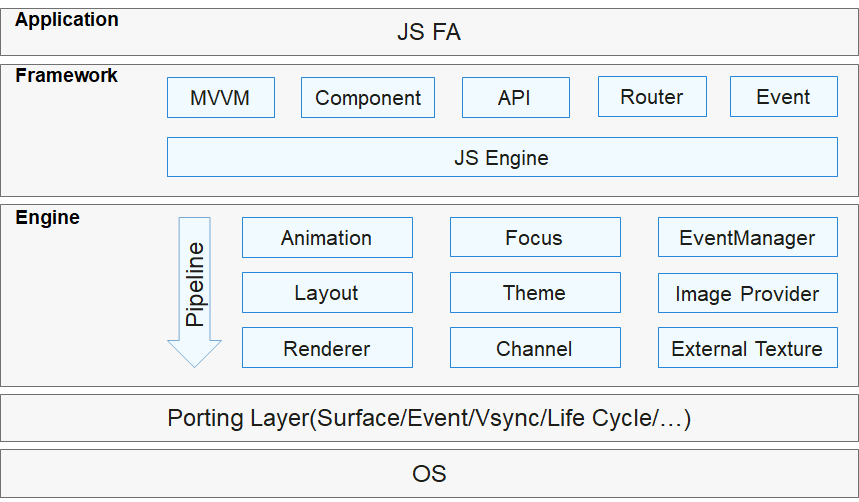Overview
The JavaScript-compatible web-like development paradigm uses the classical three-stage programming model, in which OpenHarmony Markup Language (HML) is used for building layouts, CSS for defining styles, and JavaScript for adding processing logic. UI components are associated with data through one-way data-binding. This means that when data changes, the UI automatically updates with the new data. This development paradigm has a low learning curve for frontend web developers, allowing them to quickly transform existing web applications into ArkUI applications. It could be helpful if you are developing small- and medium-sized applications with simple UIs.
For details about the components, see Component Reference (JavaScript-compatible Web-like Development Paradigm).
Overall Architecture
ArkUI with the JavaScript-compatible web-like development paradigm consists of the following layers: application layer, frontend framework layer, engine layer, and porting layer.

-
Application
Contains applications with FAs you developed. The FA application in this document refers to the application with FAs developed using JavaScript.
-
Framework
Parses UI pages and provides the Model-View-ViewModel (MVVM), page routing, custom components and more for front end development.
-
Engine
Accomplishes animation parsing, Document Object Model (DOM) building, layout computing, rendering command building and drawing, and event management.
-
Porting Layer
Abstracts the platform layer to provide abstract interfaces to connect to the platform. For example, event interconnection, rendering pipeline interconnection, and lifecycle interconnection.